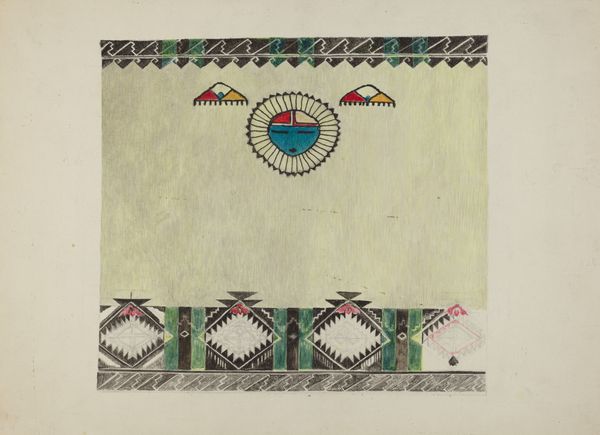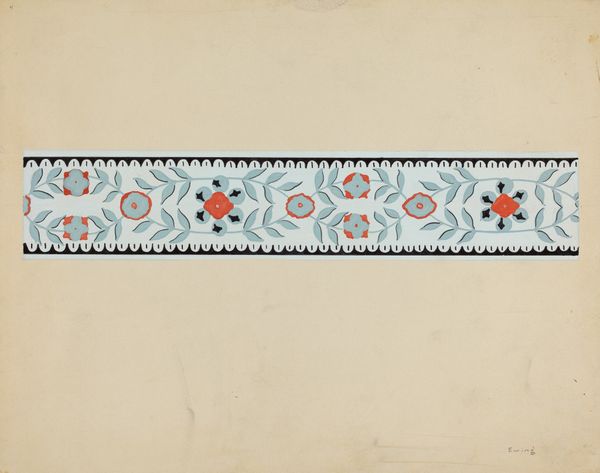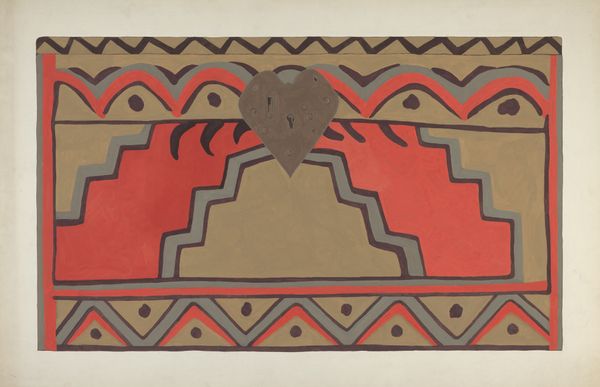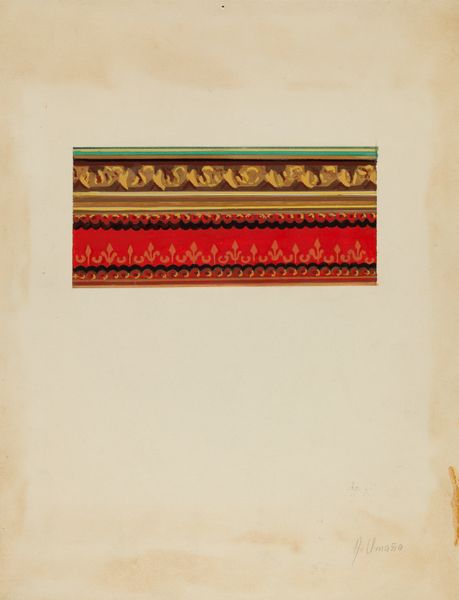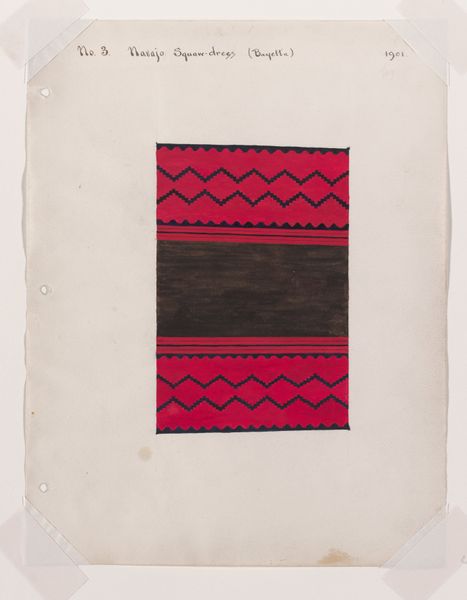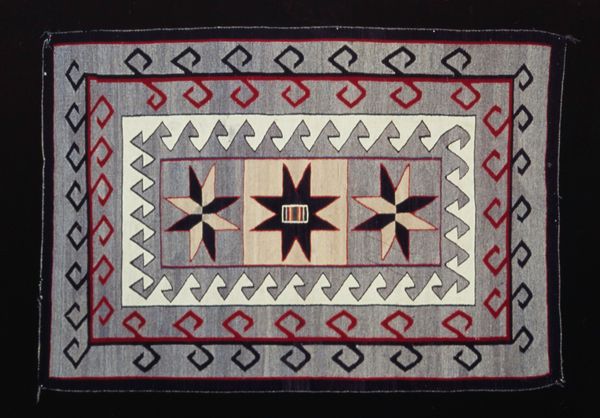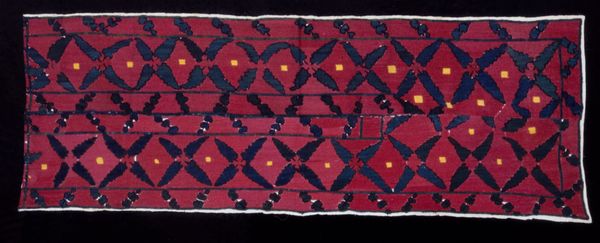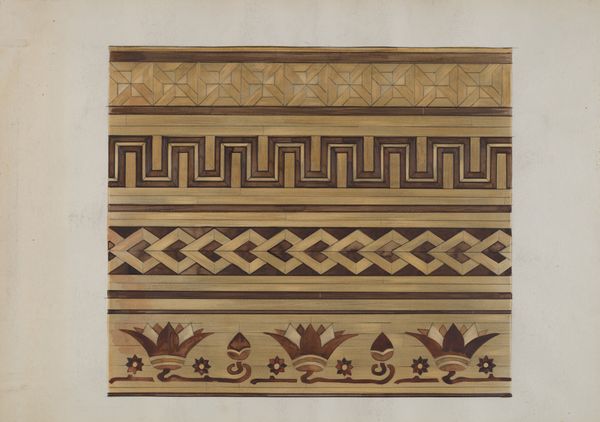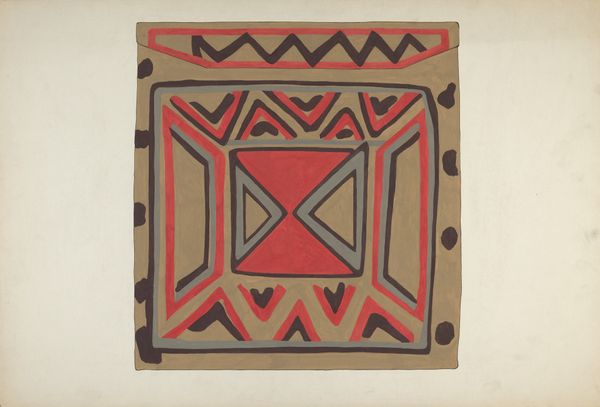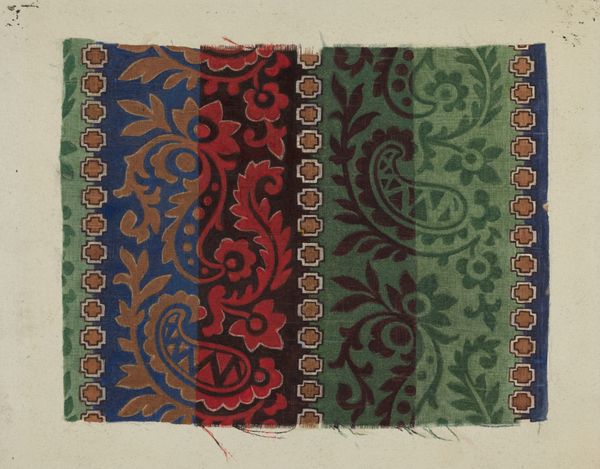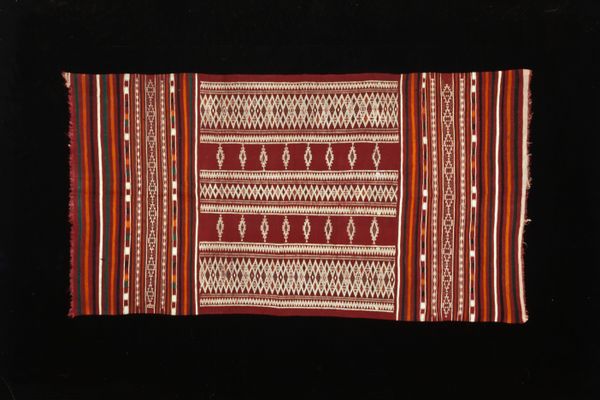
drawing, paper, pencil
#
drawing
#
paper
#
geometric
#
pencil
Dimensions: overall: 26.6 x 39.6 cm (10 1/2 x 15 9/16 in.)
Copyright: National Gallery of Art: CC0 1.0
Curator: Before us we have "Indian Blanket," a drawing by Mary Edith Brooks, likely made between 1935 and 1942. It captures the geometric designs of a textile. What is your initial reaction? Editor: A sense of serene formality. The rendering, while seemingly simple, shows great precision in its symmetrical balance and measured repetition. It feels like I'm looking at a codified language, pregnant with meaning. Curator: Indeed. Works like this drawing offer insight into the socio-economic landscape of the time, as well as into anthropological inquiry. Pieces collected from native artisans or recreated by non-native artists are of specific importance, acting as sources of information for cultural preservation. What significance do you see in these patterns? Editor: Each shape is more than mere decoration; the diamonds and zigzags evoke protection, connection to ancestors, perhaps prayers. There’s an echoing of natural forms – mountains, rain, paths of life. I’m seeing potent symbols communicating beyond words. The diamond motifs with what seems to be a cross also points to syncretism and cultural fusion. Curator: Precisely. In works depicting textiles like this, we see both the commodification and the idealization of Indigenous artistry during the early to mid-20th century. Consider also that its reinterpretation by a non-native artist adds a layer to that dynamic. The drawing isn’t just about aesthetics but becomes a point of dialogue—sometimes fraught—between cultures. Editor: Yes, it captures not just the visible motifs, but also whispers of intercultural exchange and adaptation. There is both the preservation and reinterpretation by the artist. Thank you, it offers a window into a deeply intricate dialogue embedded within this rendering. Curator: My pleasure. It underlines the complexity of how art can both reflect and shape our understanding of cultural interactions.
Comments
No comments
Be the first to comment and join the conversation on the ultimate creative platform.
